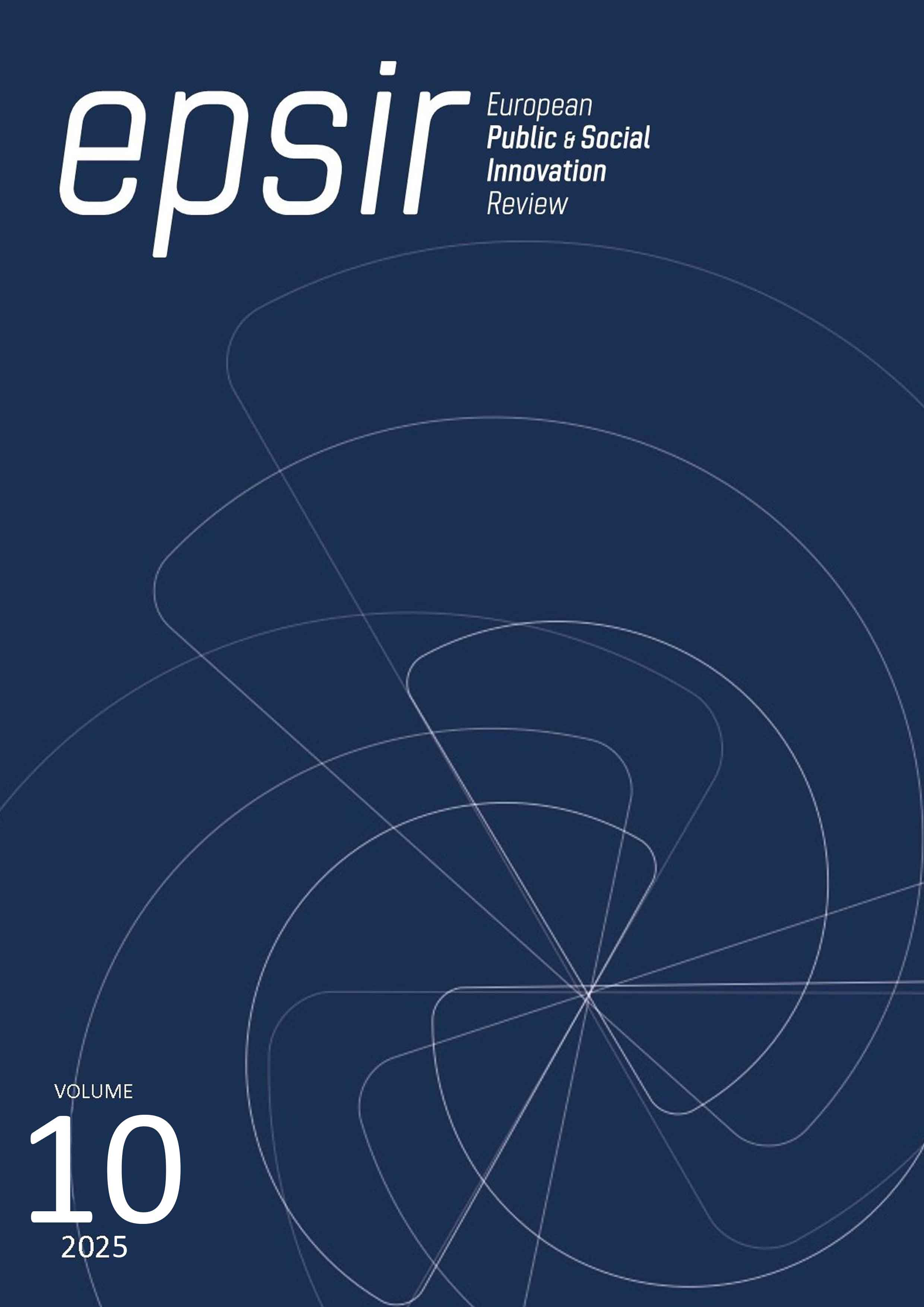Onto-epistemologías del sur y manifestación prosódica de la emoción en “Chile” de Gabriela Mistral
DOI:
https://doi.org/10.31637/epsir-2025-1811Parole chiave:
Onto-epistemologías del Sur, Manifestación Prosódica de las Emociones, Chile, Gabriela Mistral, Temporalidad del paisaje, Enunciación y Literatura, Geografía Cultural y Transandinidad, Indigenidad y MestizajeAbstract
Introducción: Gabriela Mistral es autora del famoso texto en prosa “Chile”, publicado en la revista Repertorio Americano. Dicho ensayo suscita nuestro interés en la medida en que podemos analizar la manifestación prosódica de las emociones de tres mujeres que, al momento de leer el texto en voz alta, evocan experiencias y dialogan emocionalmente con la representación geográfica, histórica, antropológica y cultural que la escritora hace de su nación. Metodología: Por medio de una coalición interdisciplinaria, pretendemos dar cuenta de curvaturas circunflejas ascendentes en relación a ciertos tropos presentes en el texto literario no ficcional de Mistral. Resultados: Inicialmente, es posible evidenciar una similitud entre las manifestaciones prosódicas de emociones en relación a la curvatura circunfleja ascendente en las palabras previamente escogidas por los investigadores para las hablantes de mayor rango etario. Discusión: Es patente la conexión de los tropos del texto con las palabras seleccionadas por los investigadores en el caso de las lectoras en los rangos etarios 30-39 años y 40-49 años respectivamente. Conclusiones: Si bien la lectora del rango 20-29 años manifiesta emocionalidad, la menor presencia de curvatura circunfleja ascendente en su caso deja entrever menor conexión con la representatividad de los tropos del texto de Mistral.
Downloads
Riferimenti bibliografici
Acosta, Y. (2012). “De la Historia de las Ideas a la Historia de las Ideas”. Revista de la Facultad de Derecho, 32, 11-16. https://www.redalyc.org/pdf/5681/568160368002.pdf
de la Cadena, M. y Starn, O. (2009). “Indigeneidad: Problemáticas, Experiencias y Agendas en el Nuevo Milenio”. Tabula Rasa, 10, 191-223. https://www.redalyc.org/pdf/396/39612022007.pdf DOI: https://doi.org/10.25058/20112742.359
Cavalheiro, J. (2010). Literatura e Enunciação. UEA Edições.
Escobar, A. (2016). “Sentipensar con la Tierra: Las Luchas Territoriales y la Dimensión Ontológica de las Epistemologías del Sur”. Revista de Antropología Iberoamericana, 11(1), 11-32. https://dialnet.unirioja.es/servlet/articulo?codigo=5647073 DOI: https://doi.org/10.11156/aibr.110102
Farías, G. (2023). “Agentes no-humanos en la escritura mistraliana”. LATAM Revista Latinoamericana de Ciencias Sociales y Humanidades, IV(1), 3256-3267. https://doi.org/10.56712/latam.v4i1.485 DOI: https://doi.org/10.56712/latam.v4i1.485
García Sigman, L. I. (2017). “El pilar francés de la nueva historia intelectual: la historia conceptual de lo político de Pierre Rosanvallon. Su crítica a la historia de las ideas y su propuesta metodológica”. En Enfoques, XXIX(1), 43-63. https://www.redalyc.org/journal/259/25955335004/html/
Genette, G. (1982). Figures of Literary Discourse. Columbia University Press.
Hidalgo Navarro, A. (2020). “Rasgos Prosódicos de la Emoción: Estudio de un Corpus Conversacional”. Phonica, 16, 36-53. https://acortar.link/gGnxbq DOI: https://doi.org/10.1344/phonica.2020.16.36-53
Ingold, T. (2000). The Perception of the Environment: Essays on livelihood, dwelling and skill. Routledge.
Mistral, G. (1923). “Chile”. Repertorio Americano: Semanario de Cultura Hispánica, 6(24), 361-362.
Palti, E. (2005). “De la Historia de ‘Ideas’ a la Historia de los ‘Lenguajes Políticos: Las Escuelas Recientes de Análisis Conceptual. El Panorama Latinoamericano”. Anales, 63(7-8), 63-81. https://acortar.link/a7kUCE
Downloads
Pubblicato
Come citare
Fascicolo
Sezione
Licenza
Copyright (c) 2025 Gabriel Arturo Farías Rojas, Miriam Elizabeth Cid Uribe

Questo lavoro è fornito con la licenza Creative Commons Attribuzione - Non commerciale - Non opere derivate 4.0 Internazionale.
Authors who publish with this journal agree to the following terms:- Authors retain copyright and grant the journal right of first publication with the work simultaneously licensed under Creative Commons Non Commercial, No Derivatives Attribution 4.0. International (CC BY-NC-ND 4.0.), that allows others to share the work with an acknowledgement of the work's authorship and initial publication in this journal.
- Authors are able to enter into separate, additional contractual arrangements for the non-exclusive distribution of the journal's published version of the work (e.g., post it to an institutional repository or publish it in a book), with an acknowledgement of its initial publication in this journal.
- Authors are permitted and encouraged to post their work online (e.g., in institutional repositories or on their website) prior to and during the submission process, as it can lead to productive exchanges, as well as earlier and greater citation of published work (See The Effect of Open Access).




